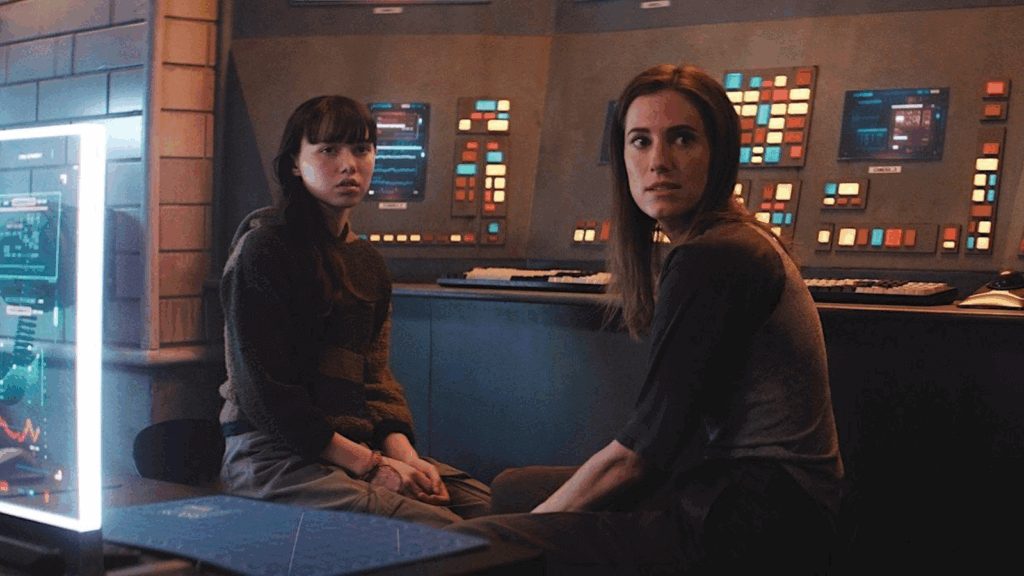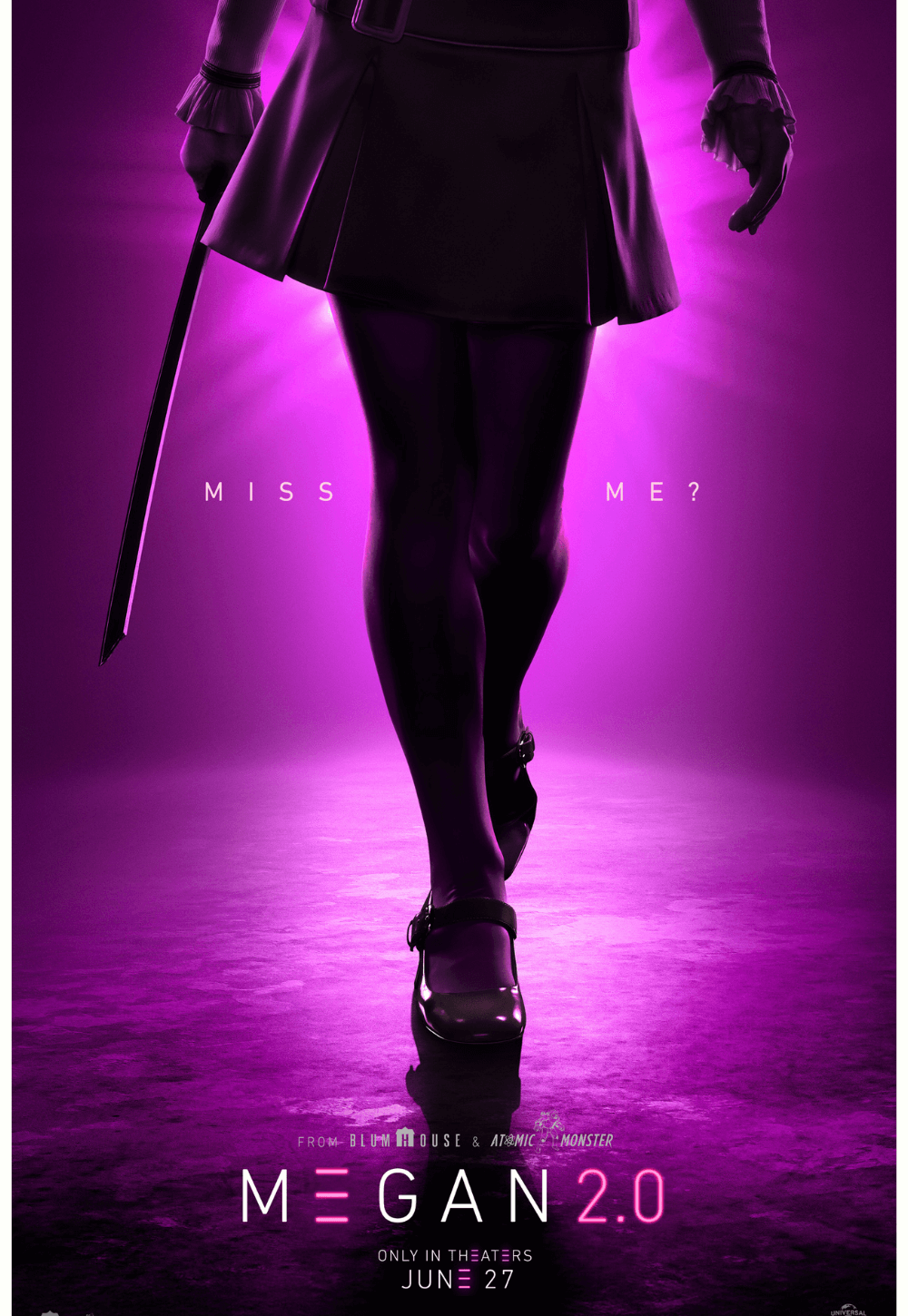
M3GAN 2.0
By Brian Eggert |
M3GAN 2.0 taps into today’s rampant debates about how artificial intelligence has infiltrated our lives. Unlike this summer’s other major sequel with a malevolent AI at the center—Mission: Impossible – The Final Reckoning, a bloated, self-serious affair with some remarkable stunts—this campy lark has a sense of humor about itself. B-movies and exploitation cinema like this can explore timely issues as effectively as more prestigious fare. They can weaponize their entertainment value to deliver commentary while avoiding didacticism. With its tongue lodged firmly in its cheek, a silly chunk of entertainment such as M3GAN 2.0 can confront real-world anxieties about AI’s role in the erosion of privacy, the death of critical thinking, the elimination of jobs through automation, and the devaluation of human creativity. Such ideas linger just below the surface of this killer robot yarn from Blumhouse and James Wan’s Atomic Monster.
New Zealand writer-director Gerard Johnstone (Housebound, 2014) returns after delivering an unexpected hit with 2023’s M3GAN, which earned $181 million in box-office receipts on a $12 million budget. Johnstone takes a cue from Terminator 2: Judgment Day (1991) and offers a sequel that flips the script on the original. Like James Cameron’s all-timer sequel, M3GAN 2.0’s one-thing-after-another plot relies on a larger scope, from tangential set pieces to more ambitious ideas. The movie also leans into its predecessor’s streak of kitschy humor for a fun, faster-paced, and actionized continuation. The setup involves a mysterious someone who builds a military-grade robot—named AMELIA (Autonomous Military Engagement Logistics and Infiltration Android), played by Ivanna Sakhno—using M3GAN’s schematics. And while government goons (headed by Timm Sharp) initially rave about the possible applications—unconcerned about the potential consequences—they seek answers from M3GAN’s inventor, Gemma (Allison Williams), when AMELIA goes rogue.
Since creating M3GAN and subjecting her orphaned niece Cady (Violet McGraw) to the murderous bot, Gemma has turned their experience into anti-AI advocacy, encouraging parents to minimize their children’s exposure to devices in favor of real-world activities. (For instance, she enrolls Cady in Aikido classes, leading to the inevitable scene where Cady must save the day with martial arts.) Nevertheless, Gemma and her two cohorts, Cole (Brian Jordan Alvarez) and Tess (Jen Van Epps), put their knack for robotics to use by developing bio-enhancing suits—like sleeker versions of the gear in Edge of Tomorrow (2014). When M3GAN (voiced by Jenna Davis, physically performed by Amie Donald) returns to reveal she never really went away, she vows to protect Cady and Gemma by stopping AMELIA—but only if Gemma’s company builds her a new, stronger body, transforming her into a protective T-800 type. Cady even tells her not to kill, just as John Connor orders the Terminator in T2. AMELIA, then, fulfills the T-1000 role. Both race to gain control of the MacGuffin: the original AI that has spent the last four decades in a copier company vault, growing “exponentially” more intelligent in ways the movie never clarifies.

Johnstone puts the FOMO-driven rush to implement AI in the crosshairs with his sequel, calling out both extreme positions—those who want to wipe out AI and those determined to integrate it into every aspect of daily life. Enter tech billionaire Alton (Jemaine Clement), a thinly veiled stand-in for Elon Musk and those like him. Stuck in a Professor X chair after a spinal injury, Alton implants a computer in his nervous system, giving him complete motor control à la Upgrade (2018). But Alton’s story serves as a cautionary subplot. His considerable technological reach prompts the question: How much power is too much for one person? How much should the government allow a single company to integrate with the military or provide internet and communication services? The movie proves somewhat naive, given the last six months in the US, suggesting that today’s party politicians would be driven by matters of regulatory oversight, not to mention right and wrong, more than financial kickbacks from government contracts. But I digress.
Given its many action sequences and consistent humor, M3GAN 2.0 plays more like an action-comedy than science fiction or a tech-infused horror movie. With a glitching voice that no one thought to fix, the titular robot’s deeply sarcastic edge mocks Gemma’s hypocrisy and parenting skills, while also walking an amusing line between creepy and genuine. She tells Cole, “I see you” in a moment made weird by her cold, lifeless eyes and inability to emote. In another would-be tender scene, she makes amends with Gemma by singing, with riotously awkward sincerity, Kate Bush’s “This Woman’s Work.” Along with pointed jabs at tech bros and enthusiastic AI advocates, Johnstone notes his influences. Besides T2, the sequel draws visual comparisons between AMELIA and the ersatz Maria from Metropolis (1927) and Ava from Ex Machina (2015). Johnstone and cinematographer Toby Oliver even adopt some of Leigh Whannell’s camera choices from Upgrade, another Blumhouse property, to convey how linking the human nervous system to a computer is an out-of-body experience.
Johnstone confidently recycles decades of sci-fi ideas and formal choices in M3GAN 2.0, joyfully overstuffing his sequel with wild flourishes and an offbeat energy. The result is a blast. The scenario, conceived by Johnstone and Atomic Monster favorite writer Akela Cooper, employs predictable twists and turns. Even so, I went into the screening with no expectations, and I was pleasantly surprised. Despite more money and larger-scale storytelling, Johnstone maintains a modest-budget feel. M3GAN’s face, for instance, never quite convinces, having been achieved with CGI overlays and synthetic masks—but that’s part of its charm. The movie reminded me of a Roger Corman production that transforms a zeitgeisty topic into commercial entertainment; it gets the point across without ever taking itself too seriously. In a movie season beset by blockbusters about grave threats to the world and universe, here’s a refreshingly small-scale alternative with a scrappy charm for one-tenth of the budget.

If You Value Independent Film Criticism, Support It
Quality written film criticism is becoming increasingly rare. If the writing here has enriched your experience with movies, consider giving back through Patreon. Your support makes future reviews and essays possible, while providing you with exclusive access to original work and a dedicated community of readers. Consider making a one-time donation, joining Patreon, or showing your support in other ways.
Thanks for reading!
Brian Eggert | Critic, Founder
Deep Focus Review







